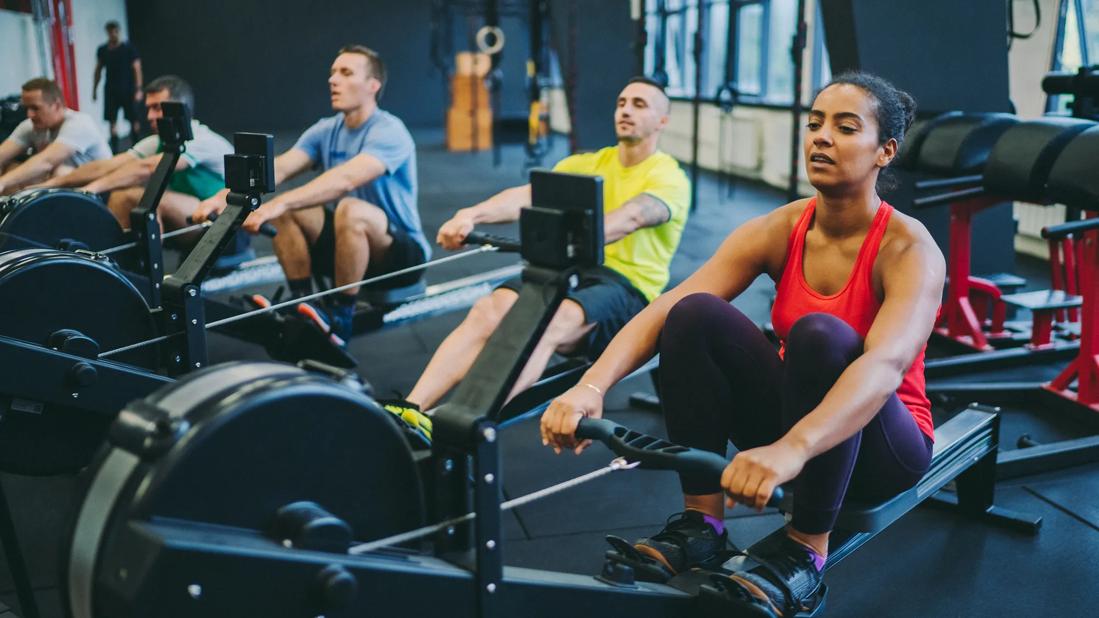Activities like swimming, cycling and rowing can get your heart pumping without stressing your joints

Cardio exercise is heart-pounding — but that doesn’t mean it needs to pound on your joints.
Advertisement
Cleveland Clinic is a non-profit academic medical center. Advertising on our site helps support our mission. We do not endorse non-Cleveland Clinic products or services. Policy
Low-impact cardio workouts raise your heart rate and test your lungs without putting as much wear and tear on your body. It’s a way to achieve cardio fitness gains while minimizing the pains, as exercise physiologist Katie Lawton, MEd, explains.
Cardio exercise (also known as aerobic exercise) strengthens your heart and lungs by working them harder. Low-impact cardio aims to get the same results without punishing your joints in the process.
But don’t think that “low-impact” means easy. The intensity level can be sky high.
“It’s not about effort. You’re still going to be able to push your body,” emphasizes Lawton. “The difference is that low-impact activities are not going to put as much stress on your joints in the process.”
Low-impact cardio can work to:
Advertisement
The American Heart Association recommends getting at least 150 minutes of moderate-intensity cardio exercise every week to keep your heart healthy. Going beyond that minimum can lower your risk of heart disease (and early death) even more, research shows.
So, what exercises qualify as low-impact cardio? Any of the following activities can get your heart rate pumping while going easier on your joints.
The buoyancy of water, which allows you to float, works to reduce the effect of your body weight on your joints. “There’s just not as much pounding on your joints when you’re in water,” says Lawton. “It’s almost a zero-impact type of cardiovascular exercise.”
Swimming or water exercise is particularly helpful if you’re experiencing joint pain or stiffness, which can come from:
Sitting on a bike seat and pedaling away keeps your weight off your feet, which minimizes the stress placed on your lower joints. “It makes a big difference when your feet aren’t on the ground,” notes Lawton.
The low-impact nature of cycling is why it’s often recommended while recovering from injuries to maintain muscle strength and cardio fitness.
Exercising from a seated position on a rowing machine offers definite perks when it comes to limiting stress on your joints.
“Not being in an upright position really takes pressure off your body,” emphasizes Lawton.
Smooth-moving elliptical machines protect your joints against jarring forces.
“You’re gliding instead of stepping up and down, which takes away that moment of impact when your feet touch down running or walking,” explains Lawton.
Towering vertical climbing machines are engineered to reduce the strain on your body as you mimic mountain climbing in a rhythmic motion using your legs and arms.
“It’s considered almost a zero-impact cardio exercise for your joints,” says Lawton.
Since your feet hit the ground, walking puts some stress on your ankles, knees and hips — but it’s A LOT less than the abuse your joints take while running. “It doesn’t have that jarring effect,” explains Lawton.
The slower pace of walking (compared to running) makes the activity doable for a wider group of people, too.
If you want to up the intensity level, walking inclines can boost the cardio component.
Consider this the in-the-wild cousin of walking, with the same general benefits, plus the perks of traveling through more natural settings. Hiking on softer trail surfaces also puts less strain on your joints.
Advertisement
It’s absolutely can! It all comes down to how you push yourself during the activity.
“If you’re cycling or on a rowing, elliptical or climbing machine, you can send your heart rate through the roof if you go hard enough,” says Lawton. “The only real difference is in what your joints go through.”
Advertisement
Learn more about our editorial process.
Advertisement

You can improve your athletic performance over time by breaking up your workout regimen into focused cycles

Lower-intensity workouts can deliver high-quality health and fitness results

Incremental changes in your exercise routine can improve your strength and endurance over time

Understanding heart rate zones can help you tailor your workout to reach your goals

Increase the size of your muscles by bulking up on protein and focusing on slow, intense movements with progressive overloading

Low-impact exercises help you recover faster between sets, during cool downs and on rest days

Eccentric is slow and steady, while concentric is fast and controlled

Weightlifting can help you build muscle mass, reduce joint pain and increase flexibility to improve your quality of life

Start having sex about 72 hours before ovulation, then at least every other day during your fertile window

Attachment theory suggests that your earliest relationships shape connections throughout your life

It isn’t a recognized mental health disorder, but research shows that problematic social media use can negatively affect your mental health, self-esteem and sleep